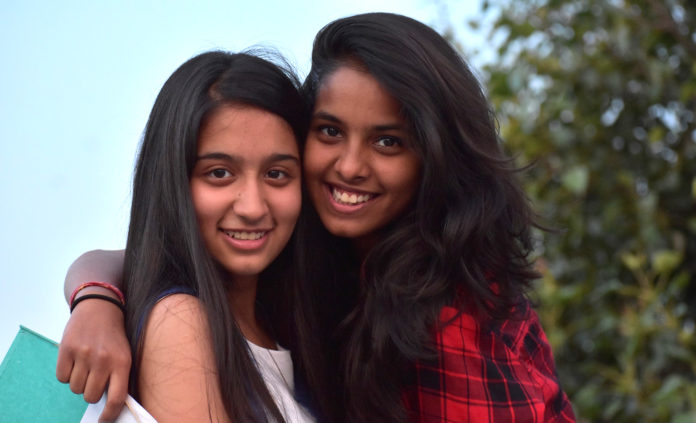Study links child malnutrition to underage pregnancies; 31% of India’s married women are mothers by the time they are 18 years old
Children born to teenage mothers are more likely to be undernourished than children of adult mothers. A new study, the first to comprehensively examine links between teenage pregnancy and child undernutrition in India, by researchers at the International Food Policy Research Institute (IFPRI) helps to understand how this happens.
India is home to the more stunted children than any other country – close to 40 percent of its 25 million annual birth cohort – and is one of the ten countries with the largest burden of teenage pregnancy. Although marriage before the age of 18 years is illegal in India, the 2016 National Family and Health Survey (NFHS)-4 revealed that 27 percent of girls are married before their 18th birthday and further, 31 percent of married Indian women gave birth by the age of 18 years.
“Reducing adolescent pregnancy in India can hasten our progress towards achieving the United Nations’ Sustainable Development Goals, particularly those related to poverty, health, nutrition, general wellbeing, equity, and education,” says IFPRI Research Fellow and study co-author, Phuong Hong Nguyen.
The Government of India has legal instruments in place to prevent early marriage. Central and state governments have also piloted different cash transfers conditional on education, with complementary programming meant to encourage investment in girls’ human capital
The study, “Social, biological and programmatic factors link adolescent pregnancy to early childhood undernutrition: a path analysis of India’s 2016 National Family and Health Survey”, co-authored by IFPRI’s Phuong Hong Nguyen, Samuel Scott, Sumanta Neupane, and Purnima Menon; and FHI360’s Lan Mai Tran, was published in The Lancet Child and Adolescent Health. The authors analysed data from 60,097 mother-child pairs and examined the extent to which teenage pregnancy is associated with child undernutrition. Further, they explored potential social, biological, and programmatic factors linking early pregnancy to child undernutrition.
The study found that stunting and underweight prevalence were 10 percentage points higher in children born to adolescent mothers than in children born to adult mothers. “Our study sheds empirical light on pathways between teenage pregnancies and chid undernutrition. People have talked about these pathways before, but this data allowed us to put some numbers to those pathways,” explains study co-author Samuel Scott.
Compared to adult mothers, teenage mothers were shorter, more likely to be underweight and anaemic, less likely to access health services and had poorer complementary feeding practices. They also had lower education, less bargaining power and lived in poorer households with poorer sanitation. “The strongest links between adolescent pregnancy and child stunting were through the mother’s education, her socio-economic status, and her weight,” said Scott.
The good news is that there is a very clear single, but admittedly not simple, policy target to address the problem: ending early marriage.
Policies and programs to delay marriage can potentially help break the intergenerational cycle of undernutrition through many routes. “Unfortunately, in India, early marriage and subsequent pregnancy is often not a deliberate choice, but rather the result of an absence of choices, and of circumstances beyond a girl’s control,” says IFPRI Senior Research Fellow and study co-author, Purnima Menon. Indeed, the Teenage Girls Survey 2018 (TAG Survey) by Naandi Foundation, a direct conversation with girls across India, shows that 73.3 percent of teenage girls want to marry only after the age of 21, which is a heartening news, but also highlights the mismatch between their aspirations and the reality of early marriage. “Continuing schooling, exploring employment opportunities, and delaying marriage and pregnancy are challenges for India’s girls that are reinforced through patriarchy and social norms.”
“We are very encouraged by the decline in the prevalence of early marriage over the last decade but also puzzled by why it is high in states like Andhra Pradesh and Telangana”, Menon added. “Further investments in appropriate interventions targeting young people, both men and women, can contribute to further declines in early marriage and early childbearing in India”.
Several strategies exist to reduce early marriage. A review of interventions to prevent child marriage in low and middle-income countries shows that interventions including unconditional cash transfers, cash transfers conditional on school enrolment or attendance, school vouchers, life-skills curriculum and livelihood training had a positive impact on increasing age at marriage.
The Government of India has legal instruments in place to prevent early marriage. Central and state governments have also piloted different cash transfers conditional on education, with complementary programming meant to encourage investment in girls’ human capital. In addition, there are several ongoing adolescent health programs under different ministries in India. At the same time, the problem of early marriage in India isn’t geographically uniform. High variability between states and districts suggests that subnational policies and programs that address local reasons for early marriage and early childbearing are still needed. These actions should account for differences in cultural practices and other context-specific conditions affecting early marriage and early childbearing.


